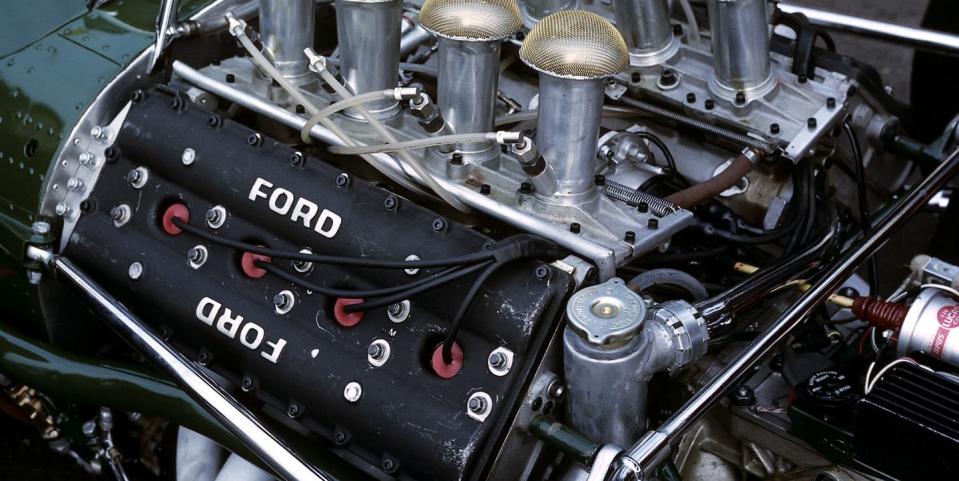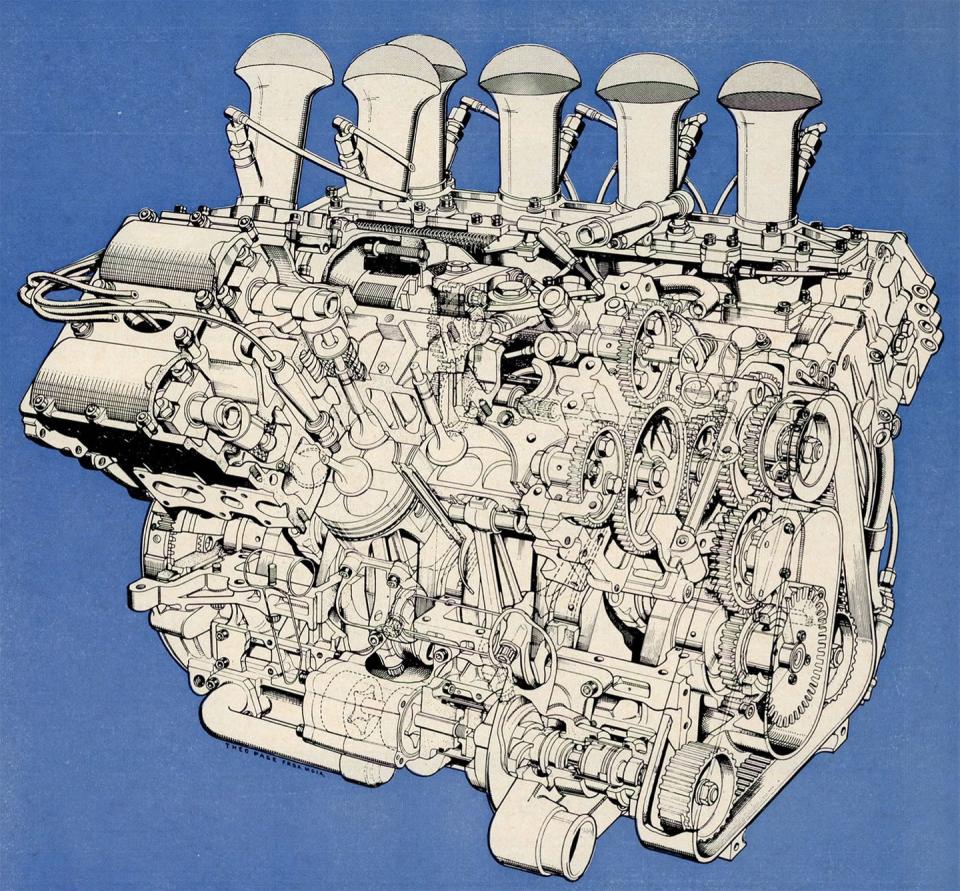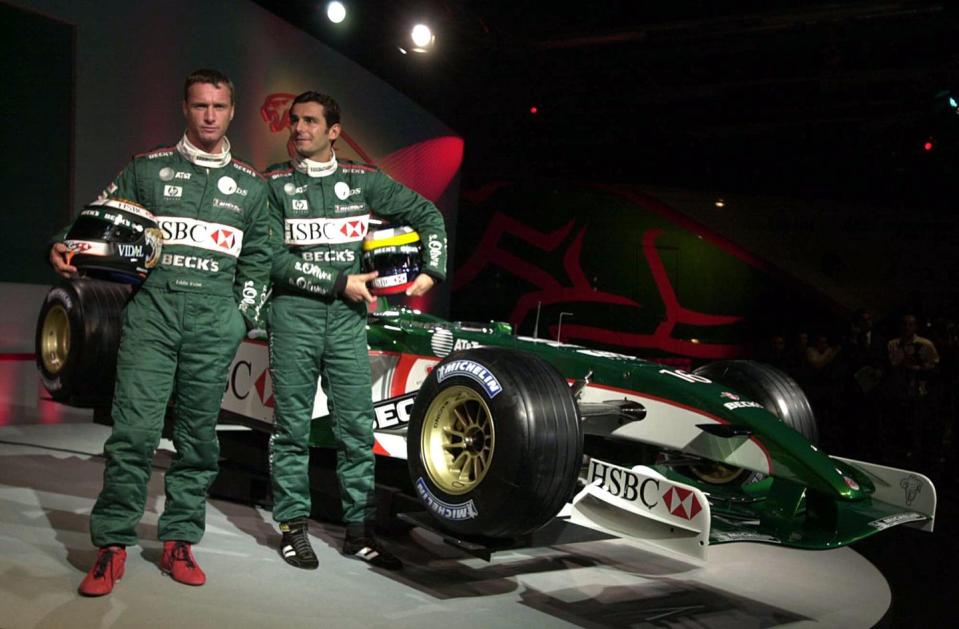How Ford's Reported F1 Return Fits With Its History

Ford is reportedly returning to Formula 1 with a partnership with Red Bull that will see Red Bull Ford Powertrains engines on the grid in 2026. The Blue Oval has a long history with F1, and this upcoming venture fits in very neatly with its past.
It started in the Sixties. Ford and Lotus enjoyed a good relationship at the time, with Ford's Kent four-cylinder making the basis for Lotus' twin-cam engine, which powered both the Elan sports car and Ford-Lotus Cortina, the dominant touring car of the day. Lotus also used Ford V-8s in its Indy 500 challengers, starting with the Lotus 29 of 1963 and most notably in the 1965 winner, the Lotus 38. After parting ways with Coventry Climax, Lotus needed a new engine supplier, and team boss Colin Chapman figured Cosworth, and specifically its designer Keith Duckworth—the "worth" in "Cosworth"—were right for the job.

Chapman persuaded Ford PR man Walter Hayes, who was deeply involved with the brand's racing activities, to pay for the engine. Ford provided Cosworth $280,000 for two engines—a four-cylinder Formula 2 engine based on the Kent block and a 3.0-liter F1 V-8, the Double Four Valve, or DFV. It was a masterpiece.
Used as a stressed member in the Lotus 49 of 1967, the DFV changed the sport. It won on debut at that year's Dutch Grand Prix, and went on to win 154 more races over the next 16 years powering a huge swath of the F1 grid. Hayes realized it was more valuable to Ford to end any exclusivity it had with Lotus, and so in 1968, the DFV was made available for purchase, much to Chapman's chagrin. The DFV was compact, reliable, powerful, and cheap—according to the December 1979 issue of Road & Track, a DFV cost $41,000 plus another $10,000 a year to run it, give or take a few thousand. That made it the default choice for basically every privateer F1 team until the dawn of the turbo era in the Eighties, plus sports-car teams, IndyCar teams, and even power-boat racers.
It's arguable that F1 might not have weathered the fuel-economy crises of the Seventies were it not for the DFV. The V-8 allowed so many teams to race affordably and successfully, and it proved well suited to the advent of ground-effect aerodynamics in the late Seventies, as its narrow packaging made it easier for teams to incorporate large venturis on either side of the car. Mercedes and Ferrari have more wins as F1 engine suppliers than Ford/Cosworth, but no single engine has come close to replicating the success of the DFV.
Ford and Cosworth couldn't quite beat it. The pair came up with a handful of DFV-derived engines throughout the Eighties, the DFZ, DFY, and DFR, and replaced it with an all-new 3.5-liter V-8, the HB, which debuted with the Benetton team in 1989. Once again, the HB proved to be a solid, economical option for a number of F1 teams including Jordan, Minardi, Lotus, McLaren and more. The HB powered a number of wins, and a later variant, badged the Ford Zetec-R, powered Michael Schumacher's 1994 title—his first and Benetton's only—though it never achieved the heights of DFV. Cosworth developed a number of other engines that wore the Ford badge throughout the Nineties, to not much success. Still, the Ford name remained a constant on the grid.
The end of the decade saw Ford go a little mad. It formed the Premiere Automotive Group (PAG) to manage its luxury road-car brands, Jaguar, Land Rover, Volvo, Aston Martin, Lincoln, and Mercury, and it decided to go F1 as a constructor. Ford purchased Jackie Stewart's Stewart Grand Prix in 1999 and renamed it Jaguar Racing in anticipation of an entry in the 2000 season. Audi purchased Cosworth from owner Vickers in 1998, though quickly sold the race-engine division of the company to Ford. Cosworth would power Jaguar's F1 cars, interestingly without a Ford badge.

Over at The-Race.com, longtime F1 designer-turned-writer Gary Anderson characterized Jaguar Racing as "a masterclass in failure." As the designer of the first Jag F1 car, the R1 of 2000, he has unique insight into the disaster. Anderson blames Ford's company culture being incompatible with running an F1 team. Whatever the exact reason, it was a disaster. Jaguar managed a best finish of seventh in the constructor's championship after much investment from Ford. Naturally, the company became impatient and sold the team in 2004.
The buyer? Red Bull.

Ford sold Cosworth Racing in 2004 to Gerald Forsythe and Kevin Kalkhoven, then the owners of Champ Car, and while the company made a handful of F1 engines afterwards, they didn't wear the Ford badge. (The part of Cosworth owned by Audi was sold to supplier Mahle in 2004 and renamed Mahle Powertrains.)
Despite the fact that it's partnering with a team it used to own, Ford's expected tie-up with Red Bull feels more like going back to its Cosworth days. That said, how much technical know-how Ford would contribute to the venture is unclear at this point. Certainly, Ford hopes that it'll be more like its earlier work with Cosworth than anything else.
You Might Also Like

 Yahoo Autos
Yahoo Autos 